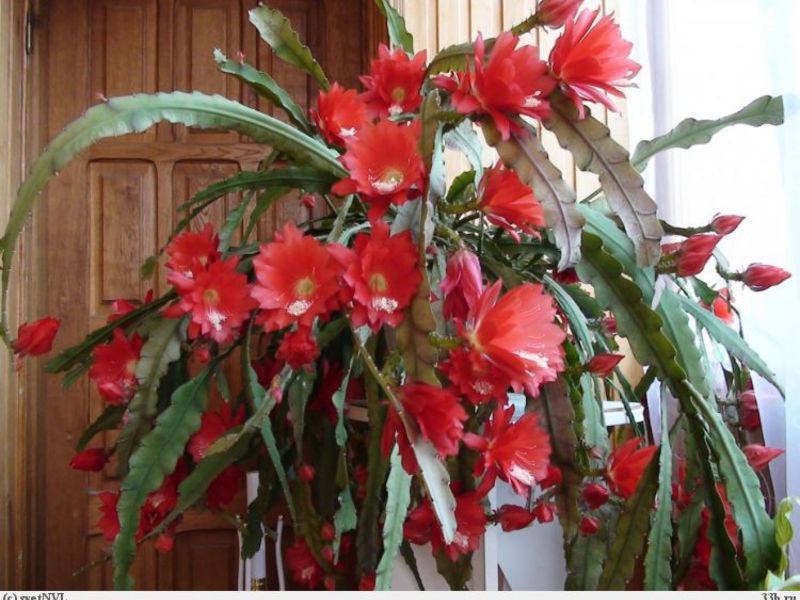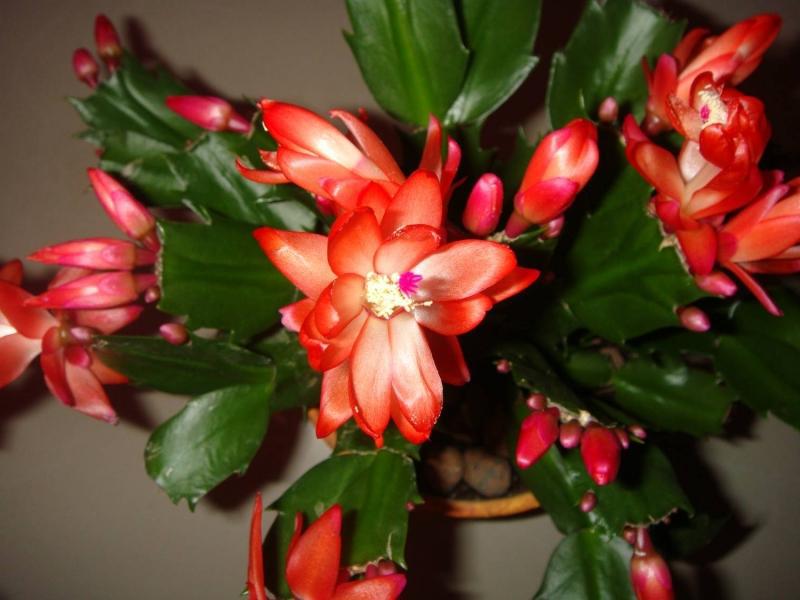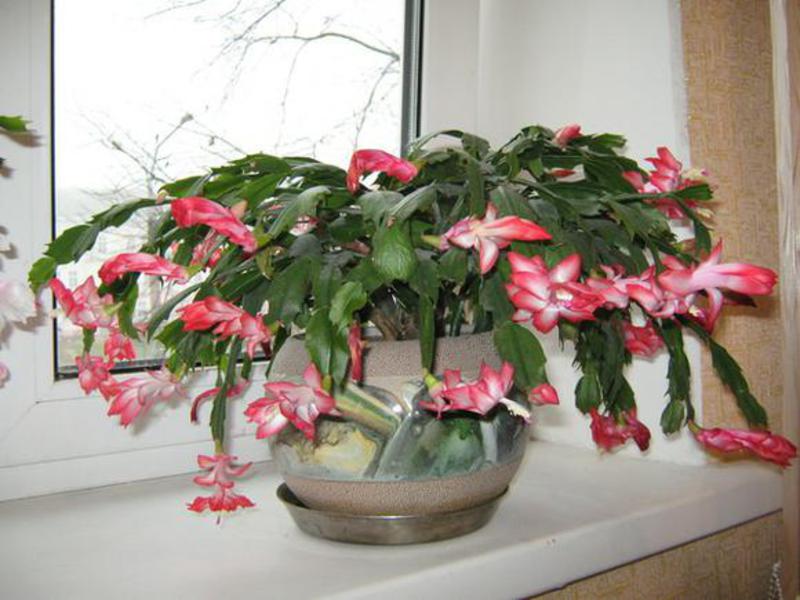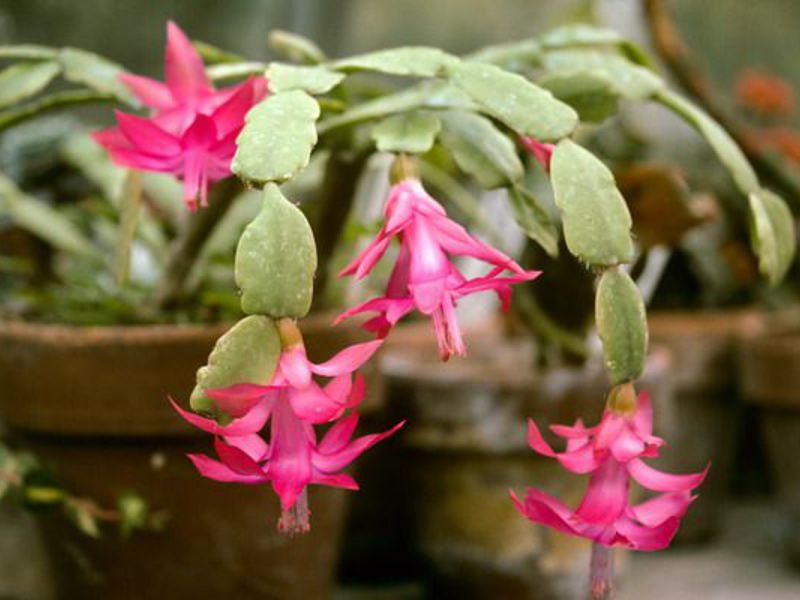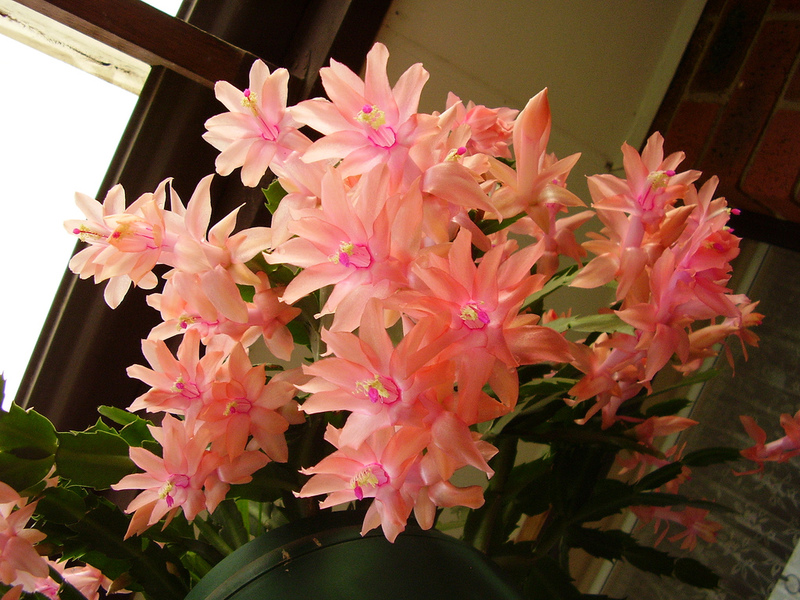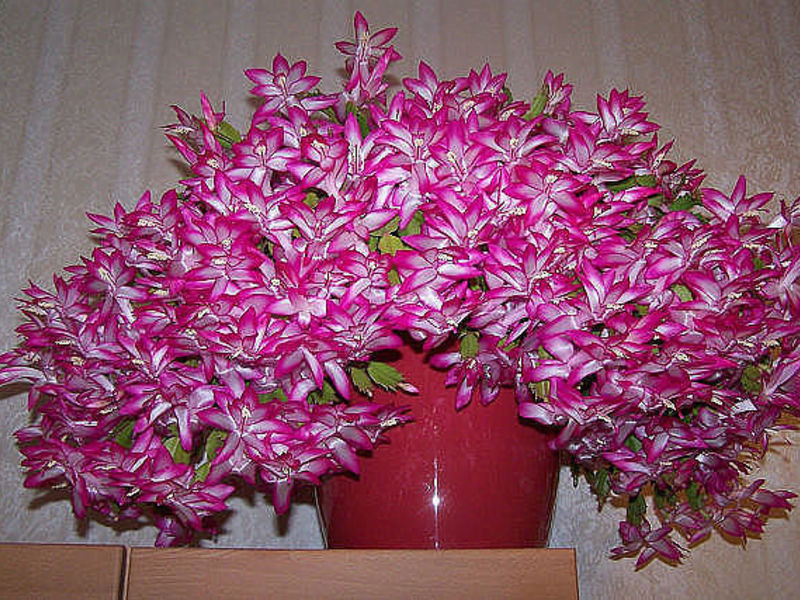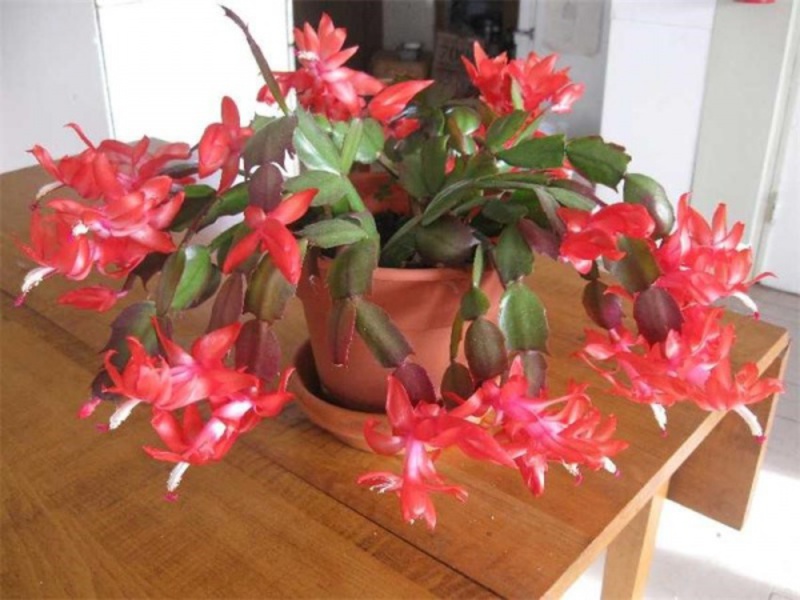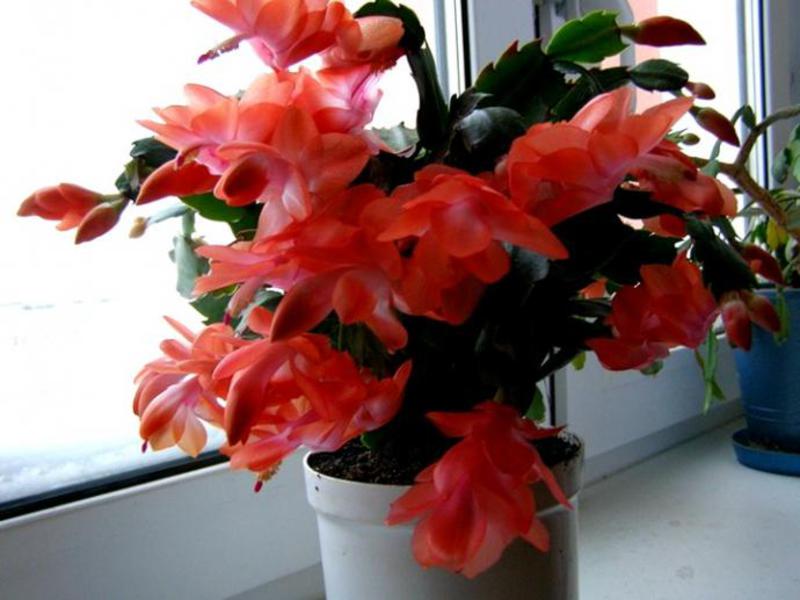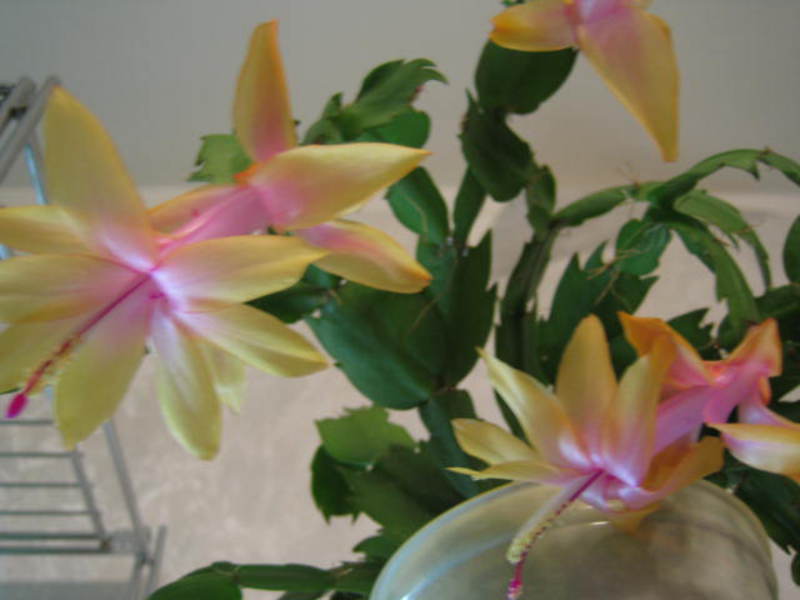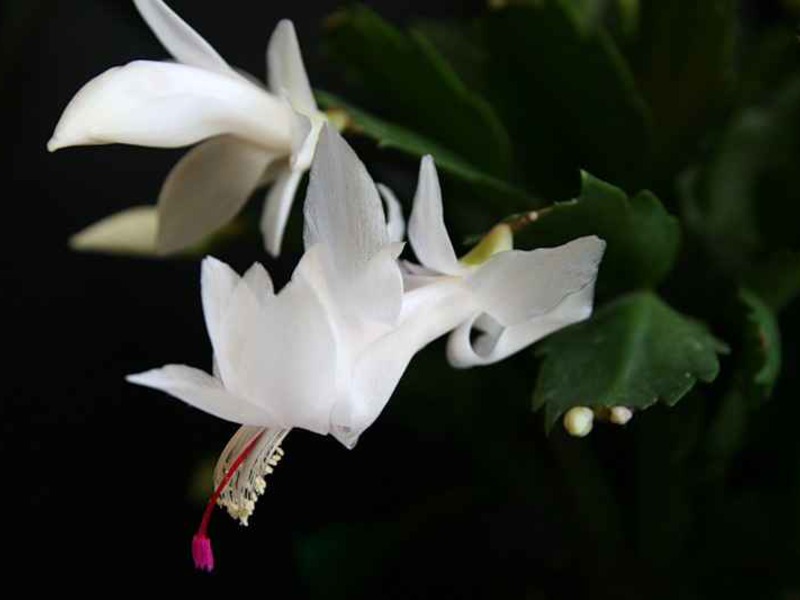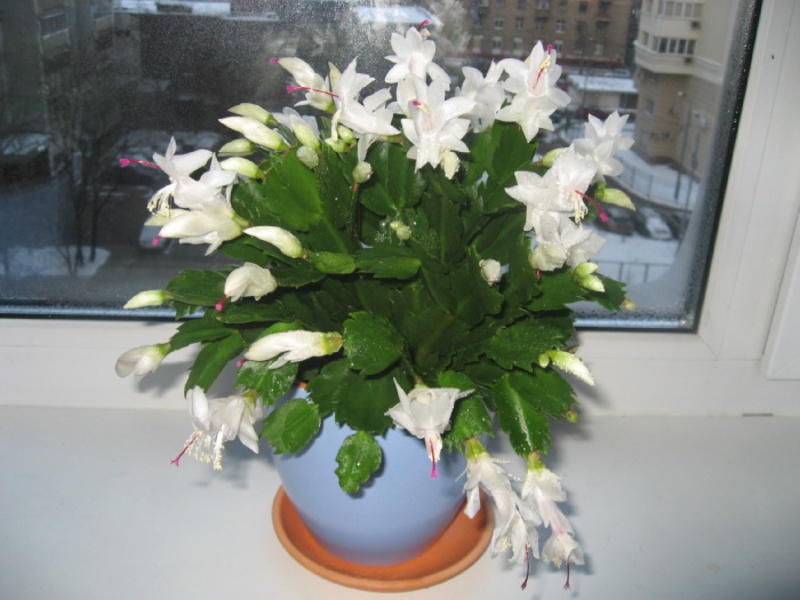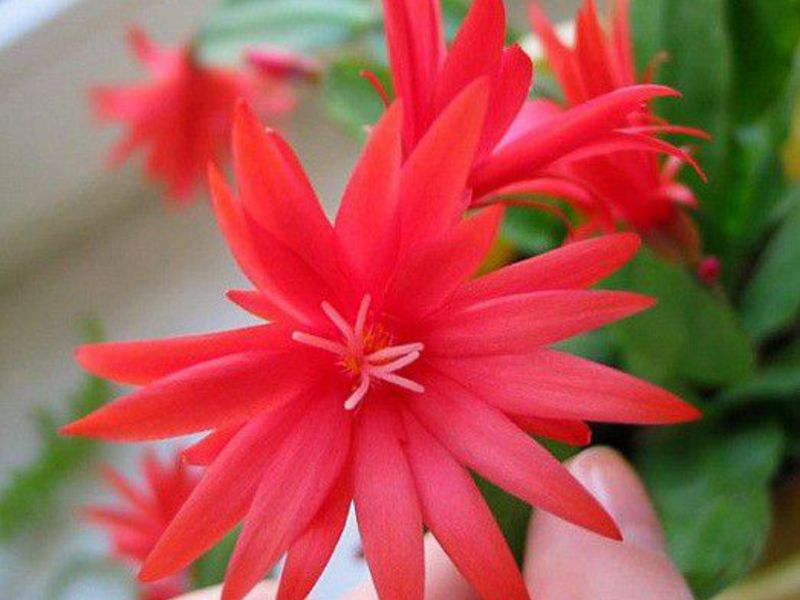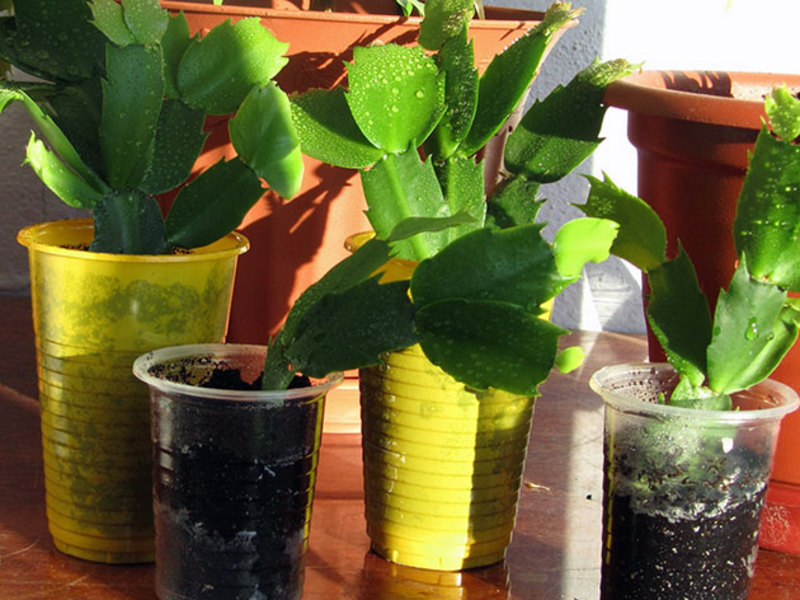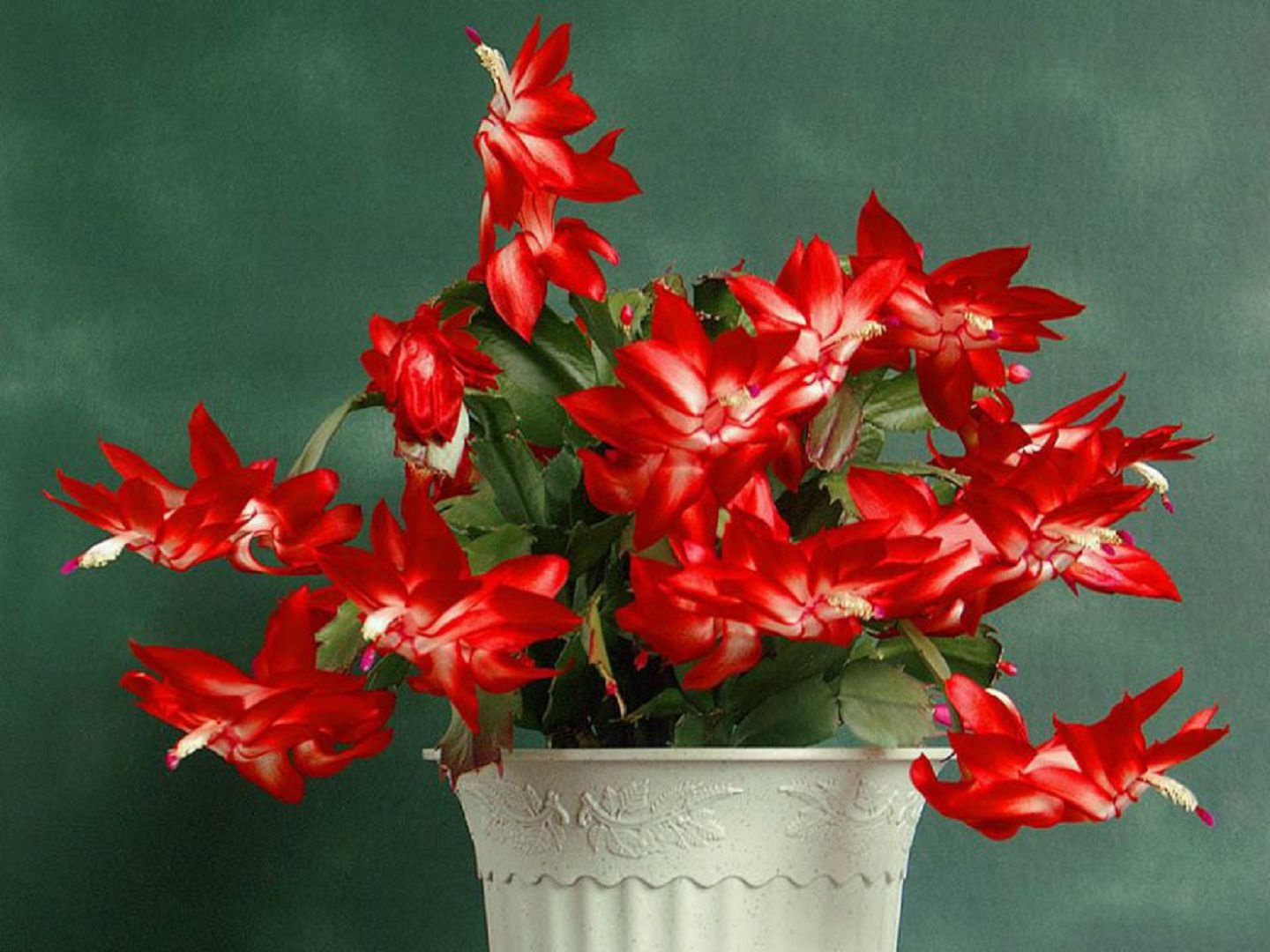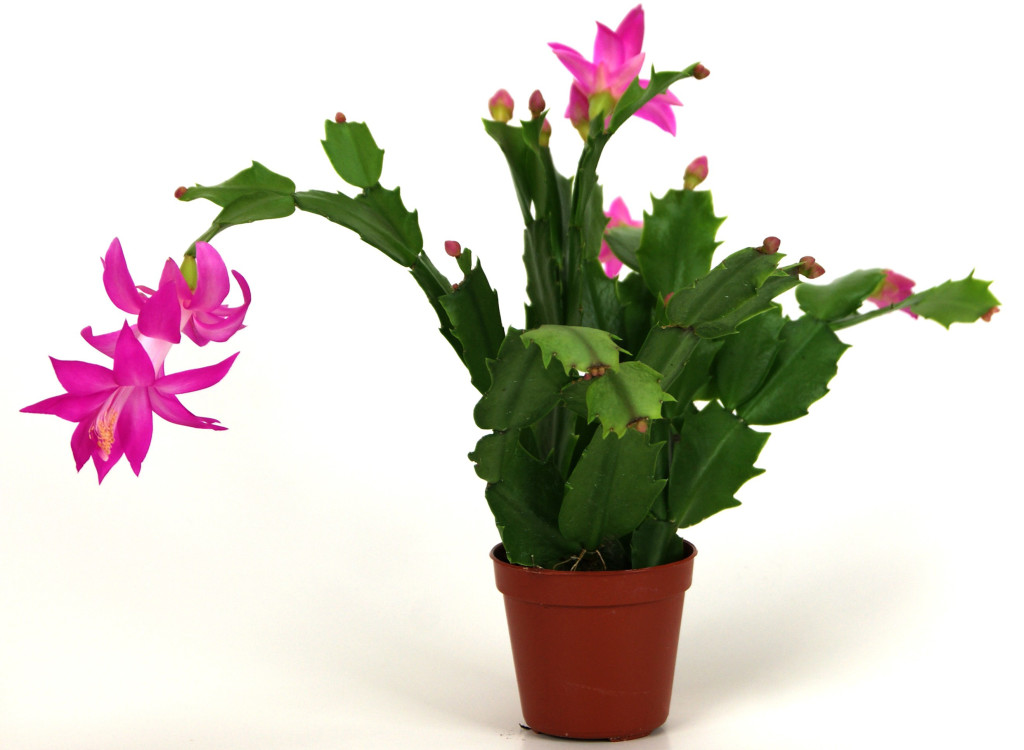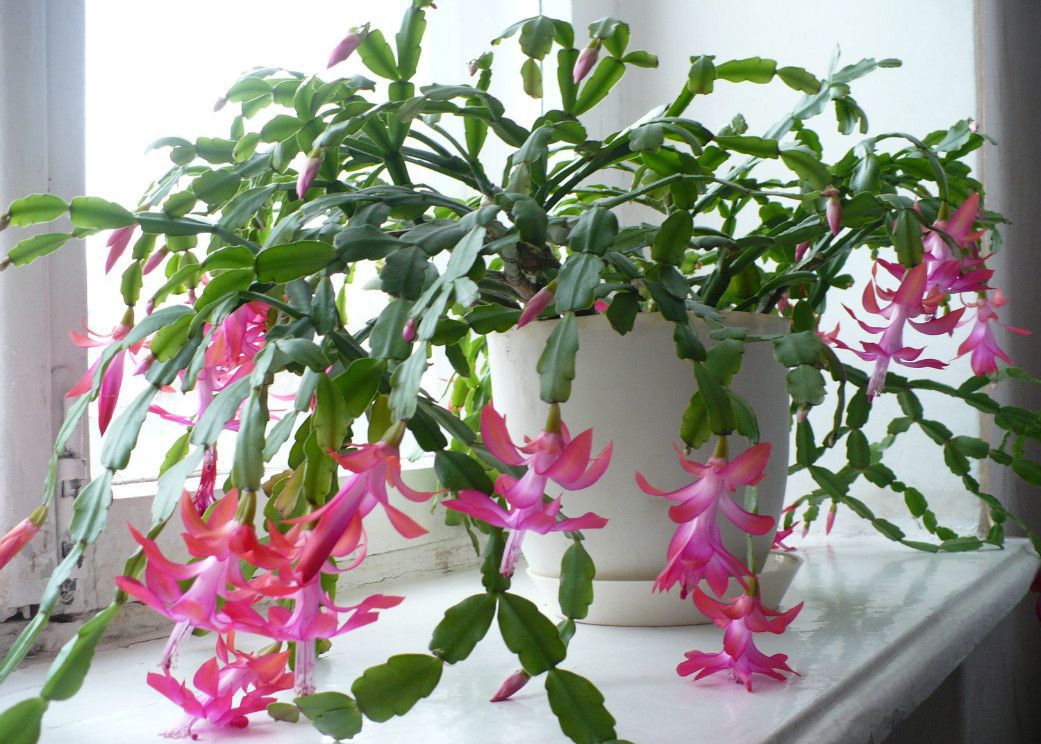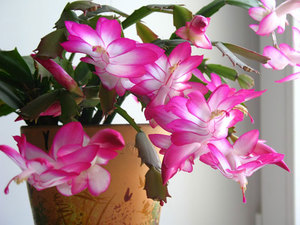 On New Year's Eve, a beautiful Decembrist flower blooms on the windowsills of many apartments. It got its name due to flowering in December, when there are bitter frosts in the yard. With its unusual flowers and unpretentious care, the Decembrist fell in love with many flower growers. A flower grown at home in compliance with all the rules is able to delight with its flowering several times a year.
On New Year's Eve, a beautiful Decembrist flower blooms on the windowsills of many apartments. It got its name due to flowering in December, when there are bitter frosts in the yard. With its unusual flowers and unpretentious care, the Decembrist fell in love with many flower growers. A flower grown at home in compliance with all the rules is able to delight with its flowering several times a year.
Content
Description and photo of the Decembrist flower
Decembrist or Schlumberger's zygocactus belongs to forest cacti, although it does not have thorns. In nature, it grows on the trunks and roots of tropical trees. Bushes 30-40 cm high consist of hanging branchy green stems formed from segments similar to leaves.
The root system of the Decembrists is rather weak, therefore, it dies under adverse conditions. However, zygocaxes are distinguished by the presence of "search" roots and aerial roots, which capture moisture from the air. As a result, the plant survives and the root system is restored.
At the tops of the shoots from the alveoli appear multi-tiered, long-tubular flowers with a bunch of long stamens. Under natural conditions, the spectacular stamens of the zygocactus are pollinated by hummingbirds. Natural color of flowers is white or red. To date, breeders have bred Decembrist varieties with flowers of raspberry, purple, yellow, white and pink shades.
How to take care of a Decembrist at home?
Zygocatus grow in good light, but do not like direct sunlight. They do not tolerate temperature extremes, because in tropical forests it is always warm and humid. If the care of the Decembrist is close to natural conditions, then the plant will always be healthy and beautiful.
Location
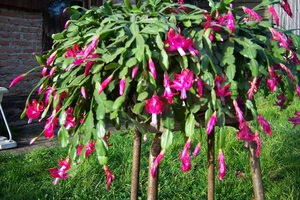 Zygocactus is best grow on eastern windowsills... It is not recommended to put a pot with a plant near the southern windows, since the segments of its stems will begin to turn yellow and crumble from direct sunlight. If the Decembrist cannot provide diffused light, it must be shaded.
Zygocactus is best grow on eastern windowsills... It is not recommended to put a pot with a plant near the southern windows, since the segments of its stems will begin to turn yellow and crumble from direct sunlight. If the Decembrist cannot provide diffused light, it must be shaded.
During bud formation and flowering, the pot with the plant should not be turned or rearranged. Otherwise, the flower will throw off its buds.
In summer, zygocactus can be grown on a balcony, loggia or garden. In this case, he needs to find a well-lit place protected from wind and direct sunlight.
The Decembrist begins to bloom at the end of November. After flowering, it must be placed in a cool room until spring.
Temperature regime
Comfortable temperature for the growth and flowering of zygocactus fluctuates between 18-25C... During active growth and flowering, the plant requires a temperature from + 18C to + 20C.In order for the plant to gain strength before flowering, it must be kept at a temperature in the range of 12-16C.
Watering and feeding
Caring for a Decembrist at home coincides with the conditions for growing indoor deciduous plants. He needs regular watering with settled water at room temperature.
If the air in the room is dry, then the lack of moisture is compensated for in two ways:
- Daily spraying of the plant with settled water.
- Place the flower pot on a pallet with wet drainage, peat or moss.
With the beginning of spring, the zygocactus needs monthly feeding. For this, complex fertilizers are used for flowers, the dose of which should be two times less than what is written in the instructions. In the summer, the plant is fed twice a month, and in the fall the Decembrist does not need fertilizers.
Pruning zygocactus
When caring for a Decembrist, do not forget about pruning, after which the bush will take on an attractive appearance and bloom profusely. To do this, in June, ugly and improperly growing shoots are shortened. Moreover, experienced flower growers recommend not cutting off parts of the shoots, but unscrewing them by hand.
Decembrist transplant
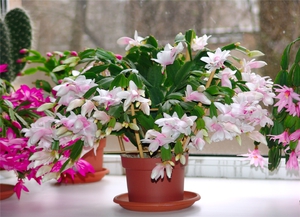 The flower is transplanted in the last days of February, immediately after flowering. Pot for the Decembrist should be wide and not very highbecause its roots are superficial. It is imperative to pour a drainage layer on the bottom of the pot.
The flower is transplanted in the last days of February, immediately after flowering. Pot for the Decembrist should be wide and not very highbecause its roots are superficial. It is imperative to pour a drainage layer on the bottom of the pot.
The Decembrist prefers a light, loose substrate, which includes:
- peat - 2 parts;
- fertile soil - 1 part;
- coarse sand - 1 part.
For disinfection, you can add a little crushed coal to the mixture, and for good water permeability - brick chips or vermiculite.
Young plants are transplanted annually into pots, which are only two centimeters larger than the previous one. Mature plants need to be replanted as needed, but not more often than once every three to four years.
Possible growing problems
When leaving in compliance with all the rules, zygocactus grows well and blooms profusely. However, problems during cultivation can arise, so it is recommended to study the main ones.
Diseases and pests of the Decembrist
The plant may be precipitated by some insects and fungal diseases... Therefore, the leaves of the plant must be periodically inspected.
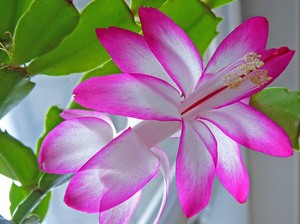 If whitish lumps, like cotton wool, appear between the shoots, it means that the Decembrist is infected with mealybug. Getting rid of a pest is quite difficult. We need urgent treatment of the plant with special preparations that are sold in flower shops.
If whitish lumps, like cotton wool, appear between the shoots, it means that the Decembrist is infected with mealybug. Getting rid of a pest is quite difficult. We need urgent treatment of the plant with special preparations that are sold in flower shops.- The leaves covered with a rusty bloom and an almost invisible cobweb indicate that the zygocactus is infected with a spider mite. They are very small and almost invisible insects of reddish, yellow or brown color. They appear when there is insufficient air humidity. You can get rid of them with the help of the drug "Neoron", "Fitoverm", "Actellik".
- Of the fungal diseases, the Decembrist is most often affected by phytophthora, phytum, fusiriosis. First of all, the root collar of the flower suffers, as a result of which it begins to wither in moist soil, becomes gray and pale, and loses its segments. In this case, the plant must be treated with Vitaros, Topaz and Maxim fungicides. In addition, you need to ensure that the soil does not become waterlogged. It should dry well between waterings.
Why doesn't the Decembrist bloom?
Most often nThe reason lies in non-compliance with growing conditions:
- Insufficient watering.
- Insufficient lighting.
- The pot is too small and requires a transplant.
- Insufficiently nutritious soil.
In order for the plant to bloom, it must be properly prepared for flowering. For this, in the fall, he is provided with a dormant period, removing the zygocactus in a cool room. At this time, it practically does not need to be watered and does not need to be fed at all.To make the zygocactus bloom, at the end of November it is moved to a well-lit place and watered. The plant "wakes up" and begins to pick up buds.
To achieve abundant flowering of the Decembrist, for neitherm must be properly looked after:
- In winter, it is recommended to illuminate the plant with an additional source of lighting.
- During the flowering period, you cannot move and rotate the pot, as well as prepare cuttings for propagation.
- It is strictly forbidden to expose the plant to temperature changes during flowering.
- If there is cool air in the room, the flowering will last longer.
- The bush will bloom profusely in a narrow pot.
- A more active flowering is facilitated by a temperature regime not higher than + 16C.
- After a dormant period, watering and feeding is resumed very carefully. Otherwise, the plant can get a lot of stress and shed the buds.
If you brought a blooming Decembrist home, and its flowers began to fall off, you should not panic. The plant simply adapts to new growing conditions.
Why does zygocactus fade?
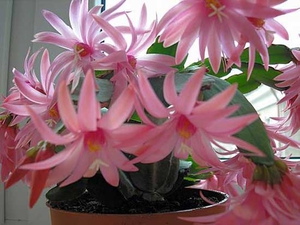 As mentioned above, the plant wilts if it suffers from fungal diseases. But there may be another reason - this rotting roots.
As mentioned above, the plant wilts if it suffers from fungal diseases. But there may be another reason - this rotting roots.
If the trunk of the Decembrist began to swing, and the flower itself lost its stability, then it is possible that its roots have died. This can happen as a result of watering with cold water, hypothermia of the plant, or, conversely, from overheating of the flowerpot in the sun. Too much fertilizer can burn the roots.
If such a problem is found, the flower needs to be urgently transplanted into another soil. When transplanting, the roots are examined, the affected ones are removed. Then the root system of the plant sprinkled with a little crushed coal and dries up. After that, the zygocactus is planted in a fresh earthen mixture and watered only as needed.
Why do leaves fall?
Decembrist leaves may fallfor seemingly no reason. However, nothing is that simple, so you should find out the reason:
- If the plant is infected with pests, then it is treated with special preparations.
- If the leaves of the plant are clean and there are no insects on them, then perhaps the reason is a lack of nutrients. In this case, the Decembrist is watered or sprayed with fertilizers for epiphytic cacti.
- The reasons for the falling off of the end segments can be: a draft, sudden temperature changes, too dry air, or a transplant made at the wrong time.
Reproduction of the Decembrist
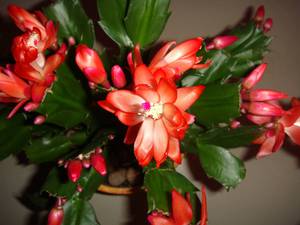 Zygocactus propagates vegetatively, that is, by cuttings. To do this, two extreme segments are torn off or unscrewed from the shoot, which must be dried within a few days. During this time, small containers or seedling boxes are prepared and filled with soil.
Zygocactus propagates vegetatively, that is, by cuttings. To do this, two extreme segments are torn off or unscrewed from the shoot, which must be dried within a few days. During this time, small containers or seedling boxes are prepared and filled with soil.
Segments are planted in moist soil and covered with glass or polyethylene. In this case, there will be a greenhouse effect and the shoots take root well and give roots. Containers should be kept in the shade at a temperature of 15-20C. The glass must be lifted daily to ventilate the seedlings. It is also necessary to ensure that the soil does not dry out during rooting.
Most often, grafting of a Decembrist is carried out after pruning it, since as a result of such a procedure, a lot of ready-made planting material remains.
With good care, the Decembrist flower at home lives up to twenty years. It can be grown in simple pots as a shrub, or in hanging pots as an ampelous plant. Beautiful, long lasting and abundant flowering in the cold winter months and fairly simple maintenance make the plant very popular with flower growers.
